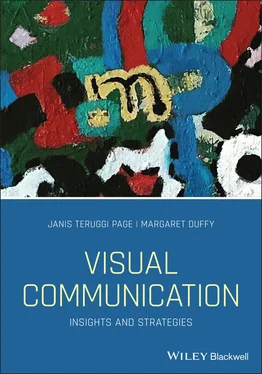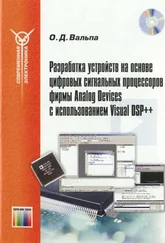Groundbreaking journalist and social critic Walter Lippmann (1922) was likely the first to apply the term “ stereotype” referring to attitudes people acquire without specific knowledge of an event or individual. People tend to quickly process visuals along the lines of what they already believe or think and interpret them in terms of familiar categories (Graber, 1988). This may lead people to reflect less on the credibility and accuracy of visual claims than those made in type.
Our Precarious Visual Culture
Today, something that looks like a photo may be an image that's digitally produced, altered, or enhanced. Many images are essentially fictions deliberately created to amuse, to deceive, or to offer an artistic perspective. Many of these are shared and even go viral. They range from silly fictions and jokes, such as fried chicken Oreos and a man presumably holding an 87‐pound cat, to manipulated photos attempting character assassination, such as President Obama shown smoking and President George W. Bush shown reading a book upside down (Hoaxes, 2015).
Some are memesshared by like‐minded people. These images with text make fun of public figures or celebrities and often call on well‐known popular culture references and icons. For example, during the Obama presidency, many forwarded email memes pictured Obama through the lens of racial stereotyping portraying him as a witch doctor, an animal, and even a pimp (Duffy et al., 2012).
For some people, such images are plausible and shareable and even if they don't literally believe the message, they nonetheless appear to believe that the visual joke carries an element of truth. The same message put into type likely would be patently offensive. However, in a cartoon‐like meme, senders and receivers of the image can claim that “it's just a joke.” For others, the images offer the opportunity to further manipulate or mashup visuals and videos to create entirely new messages and meanings. People can take photos and add stickers, filters, doodles, and text overlays. They can edit and crop images, create collages and mashups. And, of course, they can and do share them.
Images created to intentionally mislead are increasingly part of the promotional strategies for political candidates and their supporters. In pre‐Internet times, visuals and video, usually on television, played a major role in positioning candidates and their opponents. Political consultants have frequently harnessed the power of the visual because human beings are able to quickly interpret and process those messages. Early on, researchers found that in news coverage and advertisements, visual elements overwhelmed verbal elements. In 1988, an ABC news correspondent, Richard Threlkeld, voiced a spot that was aimed at discounting the claims of a George H.W. Bush presidential ad called “Tank Ride.” The piece showed the visuals of the ad as the reporter's voiceover detailed the false claims it made. However, research revealed that people who saw it tended to ignore the verbal statements and internalize the message of the original ad. An intentional alteration of images in an ad from President George W. Bush's 2004 campaign was digitally enhanced to add images of soldiers into a crowd he was addressing. After criticism, the campaign withdrew the ad.
Another questionable use of images is found in a web video by the Democratic National Campaign that used a dramatization of a man in a business suit pushing an elderly woman in a wheelchair off a cliff as a way to attack Republican Congressman Paul Ryan's proposed plan for health care reform (Raposa, 2012). While no one was likely to believe that Ryan's plan would literally involve throwing old people from high places, the powerful visuals coupled with a soundtrack of “America the Beautiful” nevertheless sent a deceptive message about the possible effects of Ryan's plan. As we examine many media artifacts, we can see the power of visual metaphors – in this case, a policy change – equated to a violent act against a helpless and vulnerable person.
Political persuasion has always drawn on popular culture and the conventions of films and other audiovisual devices. You've probably noticed that negative political ads (NPAs) tend to present opponents using dramatic conventions drawn from horror movies or crime dramas because viewers find it easy to understand and connect with those conventions. For example, often opponents will be portrayed accompanied by dark atmospheric visual effects, unflattering images, and scary or ominous music. YouTube, Facebook, and scores of other social networks provide low cost ways to distribute content beyond television programming.
Digital Transformation of Visual Culture
Much research on digital visual content in the twenty‐first century points to a tsunami of images washing over words. WebDAM, a digital brand consulting firm and data science company, reported that verbal intelligence is dropping while visual intelligence is increasing (Morrison, 2015). Scores in the SAT reading exam hit an all‐time low in 2016 (Kranse Institute, 2017) and three years later, with an increased number of student test‐takers in 2019, SAT reading scores again fell nationally. Research surfacing in many parts of the world now cautions that essential “deep reading” processes may be under threat as we move into digital‐based modes of reading (Wolf, 2018): essentially “skimming” with low engagement and retention.
But we're incredible at remembering pictures, writes biologist John Medina (n.d.) in his multimedia project Brain Rules. Three days after hearing information we may remember 10% of it but add a picture and memory increases to 65%. Thanks to the digital revolution, visuals have become a universal language. A whopping 82% of all Internet traffic globally will be video by 2022, estimates Cisco (2019), up from 75% in 2017 – and virtual reality(VR) and augmented reality(AR) will increase 12‐fold globally between 2017 and 2022.
Instagram had one billion monthly active users in 2018 according to TechCrunch (Constine, 2018). That same year, the total number of photos shared in the platform's history was recorded at more than 50 billion. Dating apps like Tinder and Friendsy make it easy (some say too easy) to exchange photos with others and find romance. When it comes to the essential organizational website, research suggests that well‐designed and highly visual sites are more trustworthy than poorly designed sites (Harley, 2016).
Members of Generation Z, those born in 1996 and later, are even more visually oriented than the much‐discussed Millennials, those born between 1980 and 1985 (Williams, 2015). Research on Gen Z finds that 44% play video games daily and 72% visit YouTube daily (Claveria, 2019). Advertisers and media companies are responding to shifts toward the visual by redesigning their communication on big and small screens. On the so‐called “visual web,” brands and news organizations have moved to image‐based content creation. The massive use of mobile is a major driver of these changes as smaller screens are friendlier to visual content than textual.
Smartphones and Visual Culture
Smartphones have become so central to social life in many countries that the prospect of losing one's phone is more distressing than losing one's car. Owning a certain type of phone or wearable technology also communicates aspects of your interests, beliefs, and priorities. Today, most people in most countries are swimming in media images or being monitored by cameras in most public and private places. Signage and outdoor advertising are everywhere.
People are sending and receiving messages on screens of all types, large and small. Smartphones and tablets capture both the mundane and extraordinary in digital photography and video. Individuals are creating their own reality shows in real time, broadcasting their activities to users who can favorite or save the videos for later viewing or redistribution. Some people post funny animal videos (Figure 1.1), others create videos aimed at inspiring and motivating, and still others vlog with beauty advice. Some of the myriad of postings are more instructional such as how to install a garbage disposal, how to build and fly a homemade drone, and even how to give an opossum a pedicure.
Читать дальше












